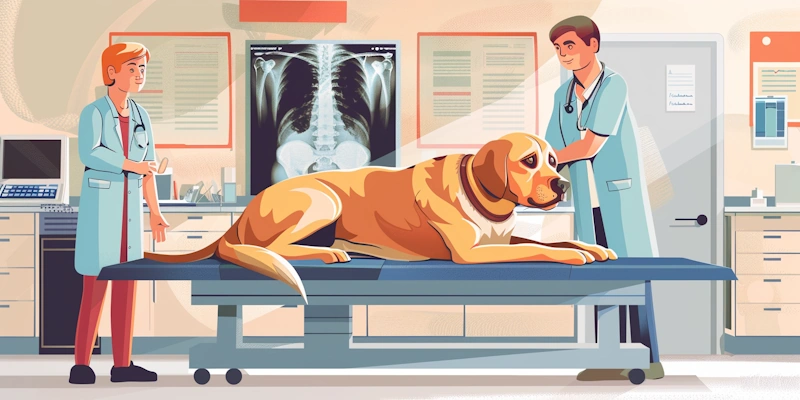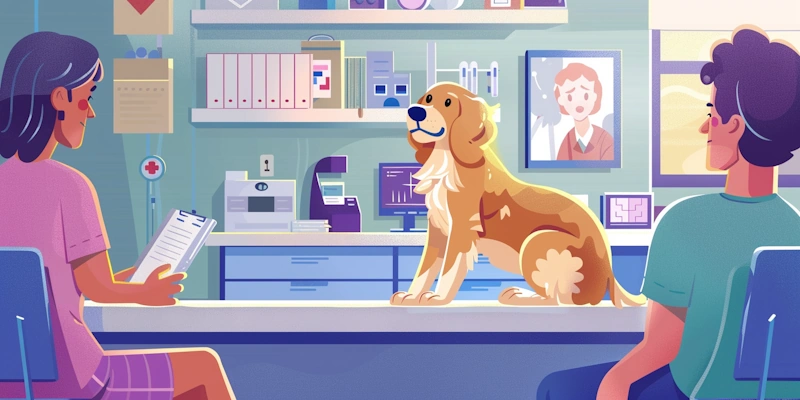Elbow dysplasia is a common orthopedic issue in dogs. This condition causes pain and affects a dog's ability to move. Understanding elbow dysplasia is crucial for every dog owner to ensure their pet's well-being.
Elbow dysplasia refers to a group of developmental abnormalities in the elbow joint. These abnormalities lead to arthritis and pain. Early diagnosis and treatment are essential to manage this condition effectively. Dogs of all ages can suffer from elbow dysplasia, but it's most common in large breeds.
Symptoms of Elbow Dysplasia
Recognizing the symptoms of elbow dysplasia can lead to early intervention. Dogs with elbow dysplasia often limp or show stiffness in their front legs. They may also exhibit a reduced range of motion in the affected joint. In severe cases, swelling and pain are evident. Therefore, regular veterinary check-ups are important to catch any early signs.
Causes of Elbow Dysplasia
Several factors contribute to the development of elbow dysplasia. Genetics play a significant role in this condition. Large breed dogs like Labradors, Golden Retrievers, and German Shepherds are more prone to elbow dysplasia. These large dogs also often suffer from Hip Dysplasia. Rapid growth rates and poor nutrition during puppyhood can also increase the risk.
Diagnosing Elbow Dysplasia

Veterinarians use several methods to diagnose elbow dysplasia. X-rays are the most common diagnostic tool. They reveal any abnormalities in the elbow joint. Additionally, CT scans and MRIs provide detailed images of the joint's structure. Early diagnosis can significantly improve a dog's quality of life.
Treatment Options for Elbow Dysplasia
Treating elbow dysplasia involves a combination of approaches. Medication helps manage pain and inflammation. Nonsteroidal anti-inflammatory drugs (NSAIDs) are often prescribed. In severe cases, surgery might be necessary to correct the joint abnormalities. Physical therapy also plays a vital role in maintaining joint mobility.
Managing Elbow Dysplasia at Home

Owners can take several steps to manage elbow dysplasia at home. Maintaining a healthy weight is crucial. Extra weight puts more stress on the joints. A balanced diet and regular exercise help keep the dog fit. Additionally, using joint supplements like glucosamine and chondroitin can support joint health.
Prevention of Elbow Dysplasia
Preventing elbow dysplasia involves careful breeding practices. Breeders should screen their dogs for genetic predispositions to the condition. Avoiding rapid weight gain during puppyhood is also essential. Feeding a balanced diet and providing appropriate exercise can reduce the risk.
The Importance of Regular Vet Visits

Regular veterinary visits are crucial for dogs prone to elbow dysplasia. Vets can monitor the dog's joint health and catch any early signs of problems. Early intervention can prevent the condition from worsening. Always consult your vet if you notice any signs of discomfort in your dog.
Conclusion
Elbow dysplasia is a challenging condition for dogs and their owners. However, with proper understanding, early diagnosis, and effective treatment, dogs can lead comfortable lives. Regular vet visits, a balanced diet, and appropriate exercise play a crucial role in managing this condition.